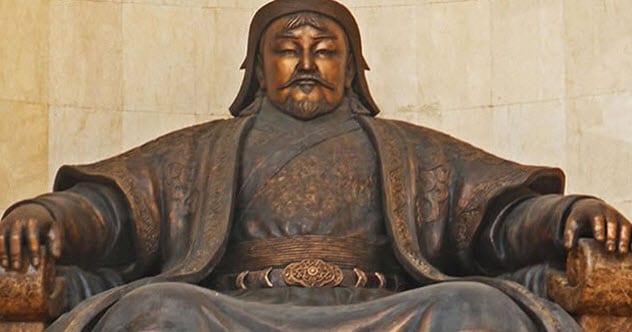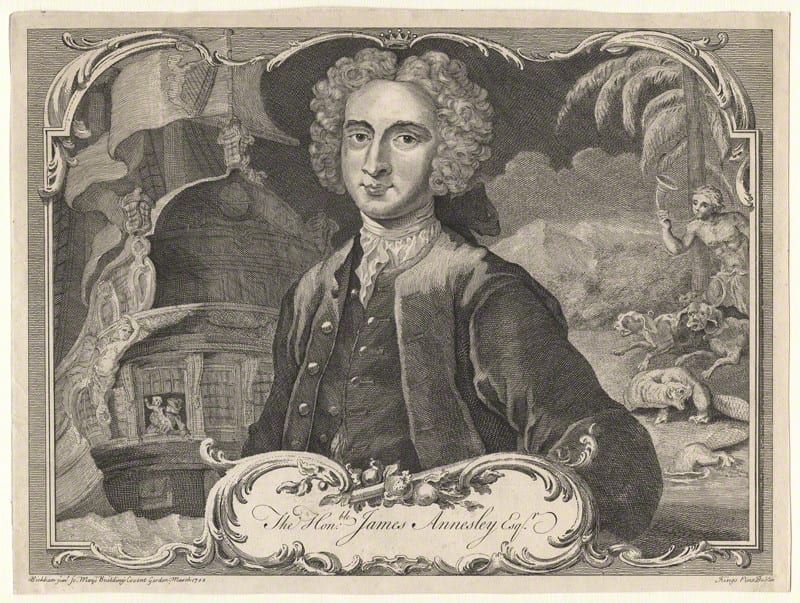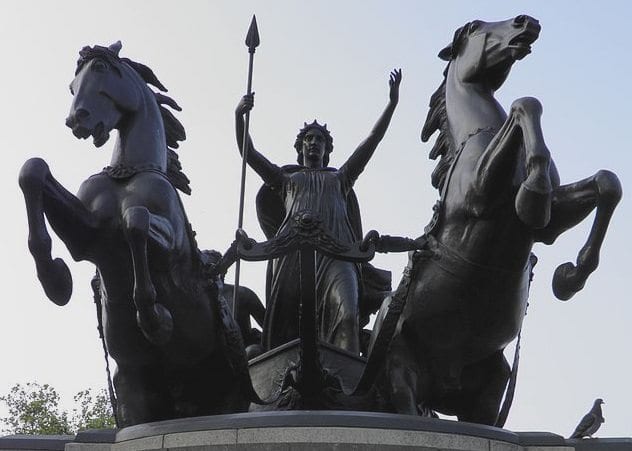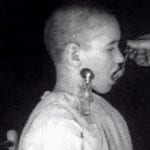 Crime
Crime  Crime
Crime  Technology
Technology 10 Hilariously Over-Engineered Solutions to Simple Problems
 Miscellaneous
Miscellaneous 10 Ironic News Stories Straight out of an Alanis Morissette Song
 Politics
Politics 10 Lesser-Known Far-Right Groups of the 21st Century
 History
History Ten Revealing Facts about Daily Domestic Life in the Old West
 Weird Stuff
Weird Stuff 10 Everyday Products Surprisingly Made by Inmates
 Movies and TV
Movies and TV 10 Actors Dragged out of Retirement for One Key Role
 Creepy
Creepy 10 Lesser-Known Shapeshifter Legends from Around the World
 Animals
Animals 10 Amazing Animal Tales from the Ancient World
 Gaming
Gaming 10 Game Characters Everyone Hated Playing
 Crime
Crime 10 Terrifying Serial Killers from Centuries Ago
 Technology
Technology 10 Hilariously Over-Engineered Solutions to Simple Problems
 Miscellaneous
Miscellaneous 10 Ironic News Stories Straight out of an Alanis Morissette Song
Who's Behind Listverse?

Jamie Frater
Head Editor
Jamie founded Listverse due to an insatiable desire to share fascinating, obscure, and bizarre facts. He has been a guest speaker on numerous national radio and television stations and is a five time published author.
More About Us Politics
Politics 10 Lesser-Known Far-Right Groups of the 21st Century
 History
History Ten Revealing Facts about Daily Domestic Life in the Old West
 Weird Stuff
Weird Stuff 10 Everyday Products Surprisingly Made by Inmates
 Movies and TV
Movies and TV 10 Actors Dragged out of Retirement for One Key Role
 Creepy
Creepy 10 Lesser-Known Shapeshifter Legends from Around the World
 Animals
Animals 10 Amazing Animal Tales from the Ancient World
 Gaming
Gaming 10 Game Characters Everyone Hated Playing
Top 10 Historic Acts Of Vengeance
Alexandre Dumas’ The Count of Monte Cristo is widely considered to be literature’s greatest contribution to the revenge tale and was even inspired by one of the entries on this list.
Because we all seek justice when faced with wrongdoing, history is littered with tales of revenge. Here are ten examples of the greatest stories of vengeance from history.
10 Anthony Ray Stockelman—Vengeance For Katie

On the 25th of January, 2005, ten-year-old Katlyn “Katie” Colman was abducted during her trek to a nearby shop. By 7:30 pm that evening, she was reported missing. After five days of intense searching, Katie’s body was found near a creek by an Indiana State Police trooper.
Initially, the police arrested Charles Hickman for the crime, but there were some inconsistencies with his story. DNA evidence eventually pointed the police in Anthony Ray Stockelman’s direction. He was arrested and charged with the abduction, molestation, and murder of Katie.
After being found guilty of the molestation and murder of 10-year old Katie Collman in 2006, Stockton was handed a life sentence. He avoided the death penalty by pleading guilty to the crime. While this might appease some people for such a brutal act against someone so young, the family of Katie disagreed.
While serving his sentence, Stockelman was accosted by several inmates and forcibly tattooed with the words “KATIE’S REVENGE” spread very visibly across his forehead. As it turned out, a cousin of Katie was doing time in the same prison and took it upon himself to mark the child molester.[1]
9 Genghis Khan—Conquest of the Khwarezmid Empire

In 1218 AD, Genghis Khan, the ruler of Mongolia, desired to form a peace and cooperation treaty with the leader of the Khwarezmid Empire, Ala ad-Din Muhammad. The Khwarezmian Empire sat to the West of the Mongol Empire, and Khan was content to work alongside his neighbor.
He sent a message seeking trade, which, in part, read, “I am master of the lands of the rising sun while you rule those of the setting sun. Let us conclude a firm treaty of friendship and peace.” Shah Muhammad reluctantly agreed to make peace with his neighbor, but it didn’t last for long.
Within a year, a Mongol caravan was taken, and the 500 people attached to it were massacred in the Khwarezmian city of Otrar. This brought forth the wrath of the one man nobody wanted to anger, Genghis Khan.
In 1219, and lasting until 1221, Genghis Khan and his Mongol Horde laid waste to the Khwarezmid Empire. Within two years, all remnants of his former neighbor were wiped from the face of the Earth, but he didn’t stop there. Once he defeated the Khwarezmid Empire, he spread out, conquering nearly all of Eurasia.
Had vengeance not compelled him to attack, it’s possible Genghis Khan wouldn’t have expanded his reach to become the largest contiguous land empire in history.[2]
8 James Annesley—A Royal Kidnapping

James Annesley was born into royalty, but like many royals throughout history, his life was a bit tumultuous due to his spot in the line of succession. His mother was the daughter of the 1st Duke of Buckingham and Normandy, but she was thrown out of the house, possibly due to infidelity.
His father, Lord Altham, rejected his son, casting him out into the streets, which is where things got dicey for James. He was kidnapped and shipped to Delaware, where he was sold into indentured servitude.
His abduction was the plot of his uncle, Richard Annesley, who wanted to remove James from the line of succession to claim the lands of the Earldom of Anglesey for himself.
James’ life was challenging, to say the least, but through it all, he managed to return to Ireland to lay claim to his birthright, challenging his uncle in court. His uncle attempted to paint James as an illegitimate child, but he eventually lost the case — after trying to assassinate James a couple of times.
Unfortunately, James died before he could receive his lands. Still, his success saw his uncle ridiculed in public, having lost everything to James, and he died within the year.[3]
7 Aaron Burr—The Burr/Hamilton Duel

If there’s one politician who holds a great deal of infamy in the history of the United States over all else, it’s Aaron Burr. The man is well-known to have killed Alexander Hamilton, the first Secretary of the Treasury, while still in office as the 3rd Vice President of the United States.
That killing, which came via a duel, was the culmination of years of animosity between the two men. Burr saw it as exacting the vengeance he sought for years against Hamilton. Several incidents led up to their feud, but the nail in the coffin was the 1804 New York Gubernatorial Election.
Burr lost that election, and he placed a lot of blame on Hamilton, who he believed orchestrated a smear campaign against him. He addressed this to Hamilton, who replied in a letter that he “cannot reconcile it with propriety to make the acknowledgment or denial, you desire,” which only served to further infuriate Burr.[4]
Burr hated the man for 15 years over perceived grievances. To resolve his anger, he challenged him to a duel, which was held in Weehawken, New Jersey, on the same spot, Hamilton lost a son three years earlier to a duel. Hamilton shot but missed Burr. The Vice President had no problem hitting his target.[5]
6 The Nakam—Revenge For The Holocaust
There have been many genocides throughout history, but few have achieved the enormous infamy of the Holocaust. There were far fewer survivors than there were dead victims, and a group of those survivors came together, calling themselves the Nakam, or “Revenge” in Hebrew.
The Nakam consisted of around 50 Holocaust survivors. They had only one goal: find and kill any Germans and Nazis in revenge for the murder of six million Jews during the Holocaust. They were indiscriminate about the people they targeted.
The leader of the group, Abba Kovner, hatched “Plan A” to poison the water supply of Nuremberg, Weimar, Hamburg, Frankfurt, and Munich, but was caught and had to chuck the poison before he could initiate his plan.
For “Plan B,” the Nakam targeted German prisoners of war held by the United States by poisoning bread with arsenic. They targeted bakeries that supplied prisons and poisoned 3,000 loaves of bread, targeting more than 12,000 Nazi prisoners. More than 2,000 German POWs were sickened, but no deaths resulted from the attack.[6]
The group mostly dissolved after that, and they escaped prosecution. Still, some broke off to form other groups to continue their mission. When members were asked about their actions, the last thing they were was apologetic, though, they were sorry their attacks failed.[7]
10 Peculiar Revenge Rituals From Around The World
5 Saint Olga of Kiev—The Destruction Of The Drevlian People
Not many people are sainted after almost obliterating an entire culture of people, but Olga was one of them. Olga married Prince Igor in 912 AD and became the Queen of Kievan Rus. In 945, Igor traveled to meet with a Slavic tribe called the Drevylans to demand an increase in tribute.
Not wanting to dole out more money to the monarch, the Drevylans decided instead to kill Igor, which earned them the wrath of Queen Olga. Attempting to make peace with Olga, the Drevlyans sent ambassadors and their choice for King to propose a marriage pact.
This was met with Olga burning the men alive and burying them in a ditch, but her revenge was not sated. Olga laid siege to their capital city, Iskorosten, and her fury was horrifying. The following year, the Derevlians offered tribute, hoping to end her campaign of death and destruction. She accepted three sparrows from each household.
She had her men attach rags dipped in sulfur to the bird’s legs, so when they returned to their nests, they set the town on fire. The result was the complete and total killing of the remaining Drevylians, and earning Olga the satisfaction of her vengeance.[8]
4 Akku Yadav—Retribution For Monstrous Atrocities
Bharat Kalicharan, also known as Akku Yadav, was a bad man… a very bad man. He was an Indian gangster who took pleasure in numerous crimes, including kidnapping, raping, extorsion, murder, and robbing whoever he wanted in and around the central Indian city of Nagpur, Maharashtra.
He especially enjoyed handing down gang rapes against women as a warning to others. He often did this to girls as young as ten. He was a brutal sociopath who enjoyed killing and torturing people, but his story of vengeance isn’t for him — it’s for the women he victimized for a decade.
When a woman named Usha Narayane resisted Yadav, she organized a mob and burned down his home. Yadav — a career criminal — went to the police for protection, but it didn’t work out for him. He was captured and lynched by several hundred women who stabbed and stoned his body for a full ten minutes.
They rubbed chili powder in his face, hacked off his penis, and destroyed his corpse. Several women admitted to the crime, and while some were arrested, everyone was eventually acquitted. Yadav’s death was the culmination of years of monstrous behavior, which were finally avenged through his own brutal murder.[9]
3 Queen Boudicca—The Iceni Rebellion

Boudicca was married to Prasutagus, who ruled the Celts as an independent ally to Rome until his death. Though he named his two daughters as heir to his throne to rule alongside one another, Rome decided on a different plan, and instead, the two girls were raped, and the Queen was flogged.
Rome’s treachery deservedly infuriated Boudicca, who turned her armies against the most powerful military entity in the world (at the time). Boudicca initiated the Iceni Rebellion against the Roman conquest of Britain in 60 AD, and her wrath spilled blood all over the British Isles.
In her fury, Boudica torched Londinium, which left a layer of charred debris more than half a meter thick. That layer can still be found beneath modern London. Her conquest continued against Roman towns. It’s estimated that she killed as many as 70,000 civilians in Londinium, Verulamium, and Camulodunum.
Unfortunately, Boudica’s rebellion failed, resulting in a disastrous famine and other problems throughout the island. Despite the failure of her rebellion, Boudica is remembered as a British Folk hero, making her something of a cultural symbol throughout the United Kingdom.[10]
2 The Mossad—Operation WRATH OF GOD
In 1972, 11 members of the Israeli Olympic Team were killed by a Palestinian militant group called Black September in what has been called the Munich Massacre. The event was eventually documented in the television film Sword of Gideon in 1986 and the Steven Spielberg film Munich in 2005.[11]
At the time of the killings, the Israeli people and their government were incited to fury, which is understandable. Israel responded to the attack by directing the Mossad, the National Intelligence Agency of Israel, to launch Operation WRATH OF GOD, which was an apt description of the vengeful operation.
WRATH OF GOD’s goal was fairly simple: assassinate the members of the Palestinian armed militant group Black September and others within the Palestine Liberation Organization. The Op was authorized by Israeli Prime Minister Golda Meir in the autumn of 1972, and it is believed to have been carried out for two decades.
The Mossad was brutal in delivering its vengeance against the perpetrators of the Munich massacre. When they closed in on a target, they sent a letter to the family of the deceased, hours before carrying out an assassination. The letters read, “A reminder we do not forget or forgive.”[12]
1 Pierre Picaud—Vengeance For Wrongful Imprisonment
There’s a good chance that Alexandre Dumas based Edmond Dantès on a 19th-century shoemaker in Nîmes, France named Pierre Picaud. In 1807, Picaud was set to marry a wealthy woman, but three of his so-called friends accused him of spying for England before he could.
Picaud spent the next seven years imprisoned in the Fenestrelle fortress. He wasn’t told of the charges against him until year three. While imprisoned, he dug a tunnel into an adjacent cell, where he befriended an Italian priest named Father Torre.
A year later, Torre lay dying, so he bequeathed a treasure hidden in Milan to his friend. When the French Imperial Government fell in 1814, Picuad was released. He spent the next ten years plotting his revenge against the men who sent him to prison — after collecting the treasure, of course.
Picaud killed or had one man murdered. He then went after his former friend Loupian, who married his former fiancée. He tricked the man’s daughter into marrying a criminal, who he had arrested, resulting in her death from shock.
He then burned down Loupian’s restaurant, leaving the man impoverished. In the end, he exacted his revenge on everyone who wronged him (and then some). History only knows the depths of his quest for vengeance, thanks to his deathbed confession.[13]
Top 10 Times Animals Held Grudges Against Humans And Took Revenge


![Top 10 Haunting Images Of Historic Tragedies [DISTURBING] Top 10 Haunting Images Of Historic Tragedies [DISTURBING]](https://listverse.com/wp-content/uploads/2020/05/33758v-150x150.jpg)





